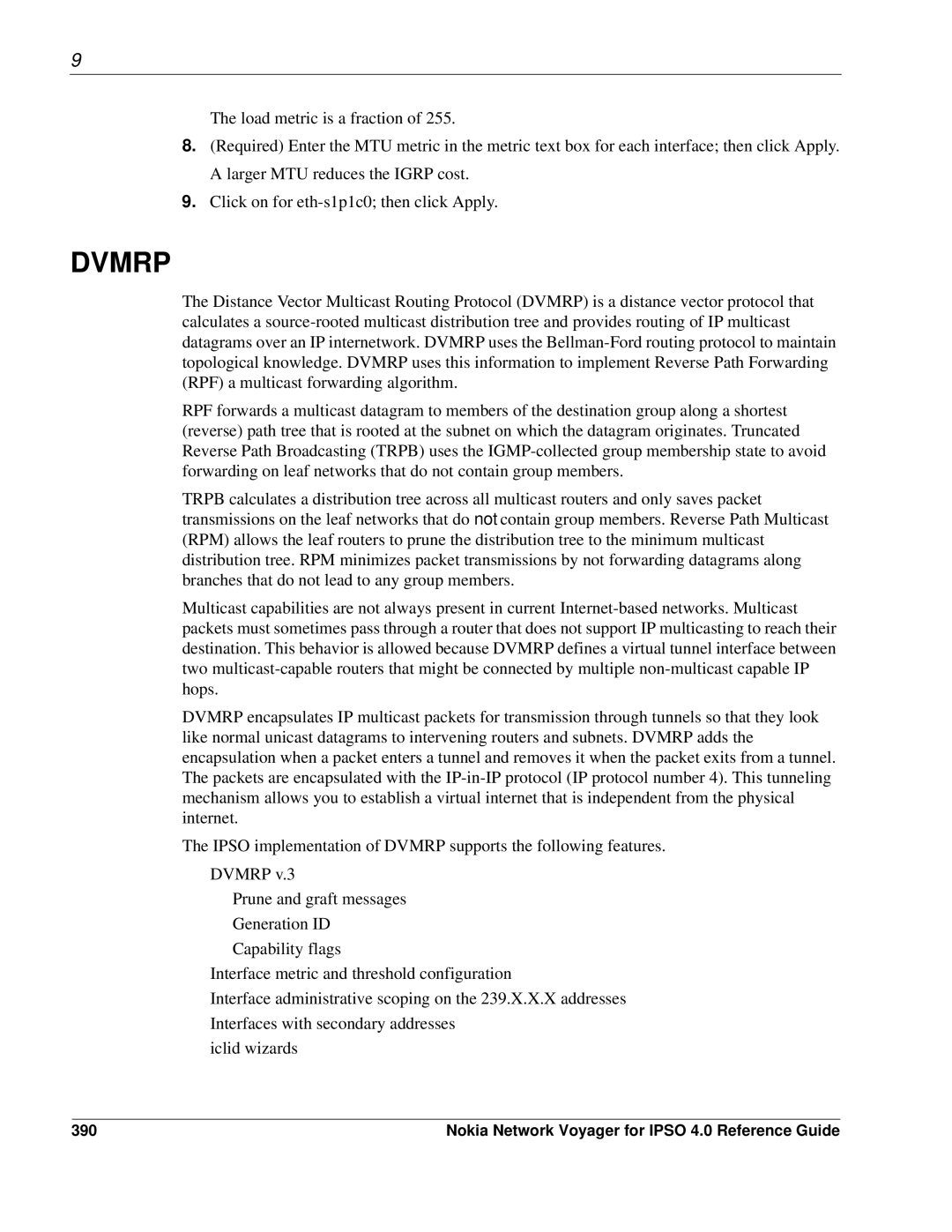
9
The load metric is a fraction of 255.
8.(Required) Enter the MTU metric in the metric text box for each interface; then click Apply. A larger MTU reduces the IGRP cost.
9.Click on for
DVMRP
The Distance Vector Multicast Routing Protocol (DVMRP) is a distance vector protocol that calculates a
RPF forwards a multicast datagram to members of the destination group along a shortest (reverse) path tree that is rooted at the subnet on which the datagram originates. Truncated Reverse Path Broadcasting (TRPB) uses the
TRPB calculates a distribution tree across all multicast routers and only saves packet transmissions on the leaf networks that do not contain group members. Reverse Path Multicast (RPM) allows the leaf routers to prune the distribution tree to the minimum multicast distribution tree. RPM minimizes packet transmissions by not forwarding datagrams along branches that do not lead to any group members.
Multicast capabilities are not always present in current
DVMRP encapsulates IP multicast packets for transmission through tunnels so that they look like normal unicast datagrams to intervening routers and subnets. DVMRP adds the encapsulation when a packet enters a tunnel and removes it when the packet exits from a tunnel. The packets are encapsulated with the
The IPSO implementation of DVMRP supports the following features.
DVMRP v.3
Prune and graft messages
Generation ID
Capability flags
Interface metric and threshold configuration
Interface administrative scoping on the 239.X.X.X addresses
Interfaces with secondary addresses
iclid wizards
390 | Nokia Network Voyager for IPSO 4.0 Reference Guide |
